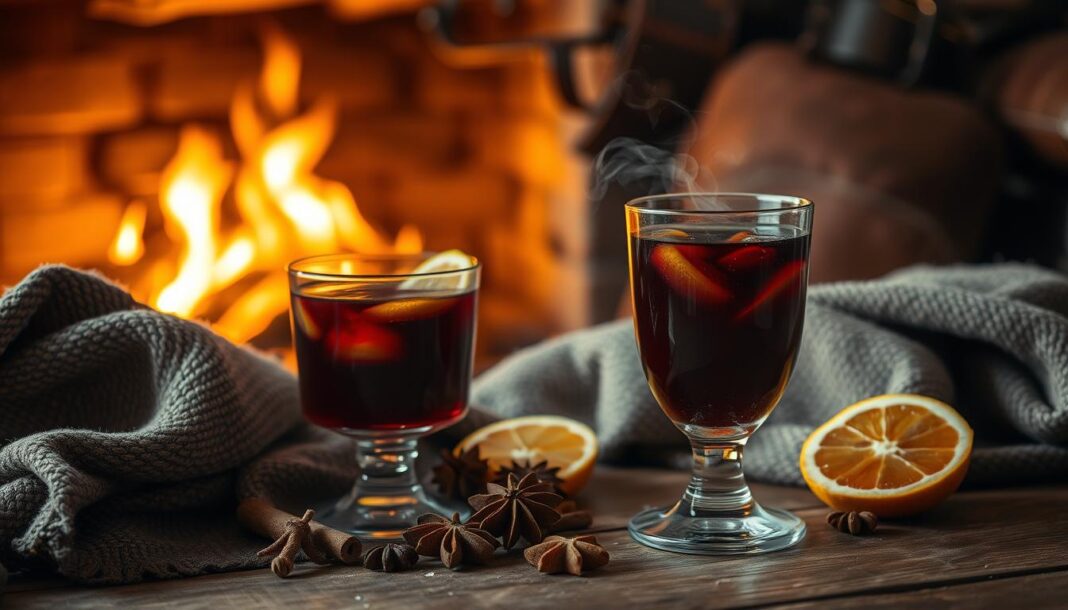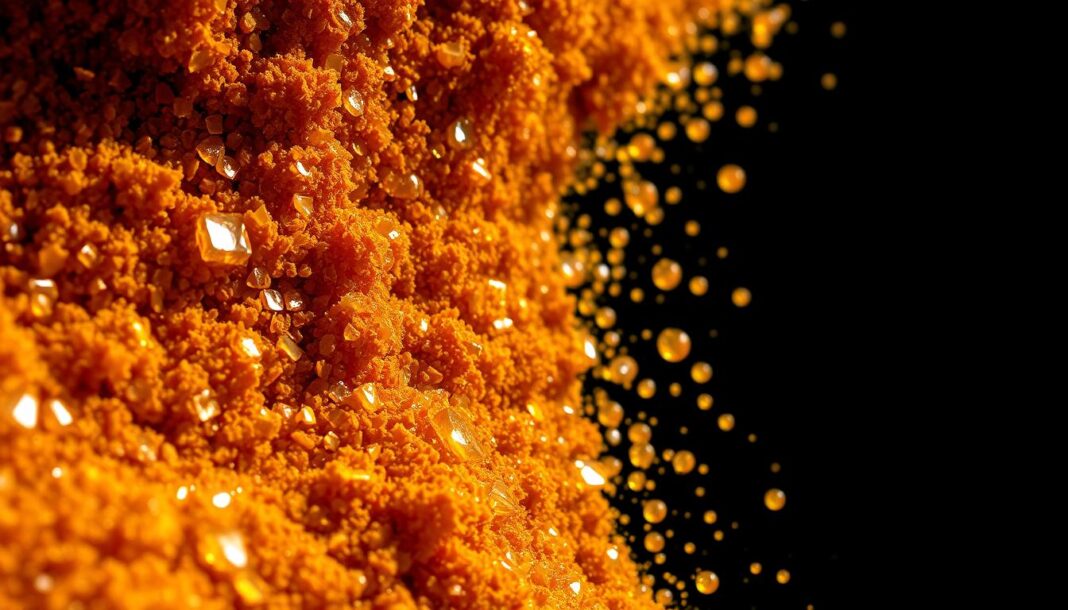As the winter chill sets in, a warm cup of mulled wine becomes the perfect companion. Known by various names around the world – glühwein, vino caliente, glögg, and more – this traditional drink has been a staple of cold-weather celebrations for centuries.
At Historical Foods, we’ve perfected a traditional recipe that brings together the warmth of spices and the richness of wine. Our authentic hot spiced wine is more than just a drink; it’s an experience that connects you to a rich culinary heritage.
Whether you’re hosting a holiday gathering or simply seeking a cozy evening drink, our recipe provides a delicious and comforting solution.
Key Takeaways
- Discover the traditional mulled wine recipe that’s been perfected over centuries.
- Learn how to balance the warmth of spices with the richness of wine.
- Understand the historical significance of this beloved winter drink.
- Get step-by-step guidance on preparing the perfect cup.
- Explore the versatility of hot spiced wine for various occasions.
The Rich History of Hot Spiced Wine
As we warm our hands around a mug of steaming mulled wine, we’re participating in a tradition that dates back thousands of years. The evolution of this beloved drink is deeply intertwined with cultural and historical contexts, making it a fascinating tale of adaptation and communal celebration.
Ancient Origins and Cultural Significance
The origins of mulled wine can be traced back to ancient civilizations, where people first began mixing wine with spices and herbs for both medicinal and social purposes. This practice spread throughout various cultures, adapting to local tastes and ingredients.

How Mulled Wine Became a Holiday Tradition
The transformation of mulled wine into a holiday tradition can be attributed to 19th-century Christmas markets in Germany and Austria. Charles Dickens’ writings, particularly “A Christmas Carol,” further popularized it in English-speaking countries. Its warming properties and communal preparation made it a staple at holiday gatherings, eventually spreading globally as a festive tradition.
What Makes a Perfect Hot Spiced Wine Recipe
A great hot spiced wine recipe is all about achieving a delicate balance between the wine and the spices. This balance is crucial for creating a harmonious flavor profile that is neither too overpowering nor too bland.
The Balance of Flavors
The balance of flavors in hot spiced wine is key to its enjoyment. It involves blending the richness of the wine with the warmth of spices without letting either dominate the other. The goal is to achieve a smooth, velvety texture and a deep, complex flavor profile.
Choosing the Right Wine Base
Selecting the right wine base is crucial for a perfect hot spiced recipe. We recommend using a medium-bodied, fruit-forward red wine like Merlot, Zinfandel, or Cabernet Sauvignon. These varieties have enough structure to withstand heating and spicing without losing their character.
| Wine Variety | Characteristics | Suitability for Mulled Wine |
|---|---|---|
| Cabernet Sauvignon | Full-bodied, rich in dark fruit flavors | High |
| Merlot | Medium-bodied, smooth, and approachable | High |
| Zinfandel | Fruity and full-bodied | High |
Essential Ingredients for Authentic Hot Spiced Wine
Crafting authentic hot spiced wine requires a thoughtful selection of ingredients. The quality and character of the final product depend on the balance and compatibility of its components.
The Best Wine Varieties to Use
For hot spiced wine, a robust red wine is typically preferred, as it holds up well to the spices and heat. Varieties like Merlot or Cabernet Sauvignon are excellent choices due to their rich flavor profiles.
Traditional Spices and Aromatics
Traditional spices include cinnamon, cloves, and nutmeg, which provide warmth and depth. Aromatics like citrus peel and star anise add complexity and fragrance to the wine.
Sweeteners and Additional Liqueurs
Sweeteners like honey or sugar are added to balance the spices and tannins. The addition of brandy or other liqueurs enhances the flavor and alcohol content, with honey being a preferred sweetener for its depth of flavor.
| Ingredient | Purpose | Examples |
|---|---|---|
| Wine | Base of the drink | Merlot, Cabernet Sauvignon |
| Spices and Aromatics | Add warmth and complexity | Cinnamon, Cloves, Nutmeg, Citrus peel |
| Sweeteners and Liqueurs | Balance flavors and enhance | Honey, Sugar, Brandy, Cointreau |
Step-by-Step Hot Spiced Wine Recipe
Now that we have explored the history and ingredients of hot spiced wine, it’s time to dive into the preparation process. Making this delightful beverage is straightforward, and with our guidance, you’ll achieve a perfectly balanced flavor.
Preparing Your Ingredients
Begin by gathering all the necessary ingredients, including your chosen wine, spices, and sweetener. We recommend slicing an orange and having cinnamon sticks, cloves, and star anise ready. The quality of your ingredients will directly impact the flavor, so choose them wisely.
Simmering Techniques
Combine the wine, sliced orange, cinnamon sticks, cloves, and star anise in a pot. Heat the mixture over low heat, allowing it to simmer for 15-45 minutes, depending on your desired intensity of flavors. After the simmering period, remove the pot from heat and stir in your reserved brandy.
Straining and Serving
Strain the mixture through a fine-mesh sieve to remove the spices and orange slices. Serve the hot spiced wine warm in heatproof mugs, adjusting the sweetness if necessary. You can garnish with a cinnamon stick or an orange slice for added aroma and visual appeal.
Common Mistakes to Avoid When Making Mulled Wine
Crafting the perfect mulled wine requires avoiding a few key mistakes. When preparing this beloved holiday drink, the balance of flavors and the quality of ingredients are paramount. We have identified some common pitfalls to help you create a truly exceptional mulled wine.
Temperature Control Pitfalls
One of the most critical aspects of making mulled wine is controlling the temperature. If the wine is heated too high, it can burn or become bitter, ruining the drink. We recommend keeping the temperature between 160°F and 180°F to preserve the delicate flavor. This range allows the spices to infuse properly without damaging the wine.
Spice Balance Errors
Balancing the spices is another crucial step. Using whole spices like cinnamon, cloves, and star anise is recommended for better flavor infusion. For instance, using too many cloves can give the wine an overly medicinal taste, while too much star anise can make it taste like licorice. We suggest using 6-8 whole cloves and 1-2 star anise pods per bottle of wine to achieve a harmonious balance.
Delicious Variations of Hot Spiced Wine
We can elevate the classic hot spiced wine recipe by introducing new ingredients and flavors, making it a versatile drink for various occasions. This flexibility allows us to cater to different tastes and preferences.
White Wine Mulled Recipe
For a lighter version, use a dry white wine such as Chardonnay or Riesling. Add spices like cinnamon, nutmeg, and cloves to create a unique flavor profile. This variation is perfect for those who prefer a crisper mulled wine.
Apple Cider Mulled Wine
Combine apple cider with red wine for a twist on the classic recipe. The apple cider adds a sweet and fruity flavor, making it an excellent choice for the holiday season. This drink is sure to be a hit with apple cider lovers.
Non-Alcoholic Alternatives
For a non-alcoholic version, use grape juice or apple cider as the base and add the same spices. You can also enhance the flavor with vanilla and almond extracts. These alternatives are perfect for those who abstain from alcohol, providing the same aromatic pleasure and warming comfort as traditional mulled wine.
Perfect Pairings for Your Hot Spiced Wine
During the holiday season, a warm cup of hot spiced wine is even more enjoyable when paired with the right accompaniments. We find that the key to perfect pairings lies in balancing flavors and textures.
Holiday Appetizers That Complement Mulled Wine
For a delightful holiday spread, consider pairing your mulled wine with appetizers that complement its rich flavors. Cheese and charcuterie boards, spinach and artichoke dip, and roasted nuts are excellent choices. These options enhance the drinking experience by offering contrasting flavors and textures.
Dessert Pairings
When it comes to desserts, we recommend pairing your hot spiced wine with treats that complement its spices. Spiced cookies, fruit-based desserts, and dark chocolate treats are ideal. For instance, poached pears in honey syrup or traditional European holiday cookies like German Lebkuchen or Dutch Speculaas make excellent pairings. The key is to balance flavors without duplicating spice profiles.
| Dessert | Why it Pairs Well |
|---|---|
| Spiced Cookies | Complementary spice notes |
| Dark Chocolate | Fruity undertones enhance both wine and chocolate |
| Poached Pears in Honey Syrup | Subtle sweetness and tender texture contrast |
Serving and Presentation Ideas
When it comes to serving hot spiced wine, the right vessels and garnishes make all the difference. The choice of glassware and the way you present your hot spiced wine can elevate the overall experience for your guests.
Festive Garnishes
Festive garnishes add a touch of elegance and warmth to your hot spiced wine. Consider using cinnamon sticks, orange slices, or cloves to create an inviting and aromatic drink. These garnishes not only add to the visual appeal but also enhance the aromatic experience.
The Right Glassware
Serve your hot spiced wine in heatproof mugs or glasses to maintain the optimal drinking temperature. Traditional options include glass mugs with handles or ceramic mugs that help retain heat. The right glassware improves the presentation of your drink, making it more enjoyable for your guests.
- Glass mugs with handles offer a balance of functionality and aesthetics, protecting hands from the heat while showcasing the rich color of the wine.
- Ceramic mugs are ideal for rustic or outdoor settings, providing superior heat retention and a traditional charm.
- Irish coffee glasses combine elegance with functionality, their stemmed design showcasing garnishes while keeping hands warm.
Pre-warming your chosen vessel with hot water before serving ensures that your hot spiced wine stays warm for a longer period, allowing your guests to fully appreciate the flavors and aromas of this delightful drink.
Making Hot Spiced Wine for a Crowd
We love serving hot spiced wine at our holiday parties, and it’s easier than you think. When you’re hosting a large gathering, you can scale up your favorite recipe to keep everyone warm and cozy.
Scaling the Recipe for Parties
To make hot spiced wine for a crowd, simply multiply the ingredients based on the number of guests you’re expecting. This way, you can ensure everyone gets a cup or two.
Slow Cooker Method for Large Batches
Using a slow cooker is an ideal way to make hot spiced wine for a large group. Combine wine, apple cider, honey, orange zest, and juice in a 3-quart or larger slow cooker. Add spices like cloves, cardamom, cinnamon, and star anise. Cook on low for 30 minutes to 1 hour, or until warm. Stir in brandy just before serving. Keep the wine warm on the “Keep Warm” setting for up to several hours, refreshing with additional brandy as needed every hour – about 1 tablespoon per quart.
Embracing the Warmth of Tradition
The tradition of mulled wine is a rich tapestry woven from centuries of cultural heritage and festive gatherings. As we savor this drink, we’re connecting with a timeless holiday tradition that warms our hearts and homes. The addition of honey to our wine recipe enhances its flavor, making it a perfect companion for cold winter nights. We encourage you to share this wine from a festive bottle with loved ones, creating memories that last a lifetime. In doing so, you’re participating in a shared cultural experience that transcends individual backgrounds.


